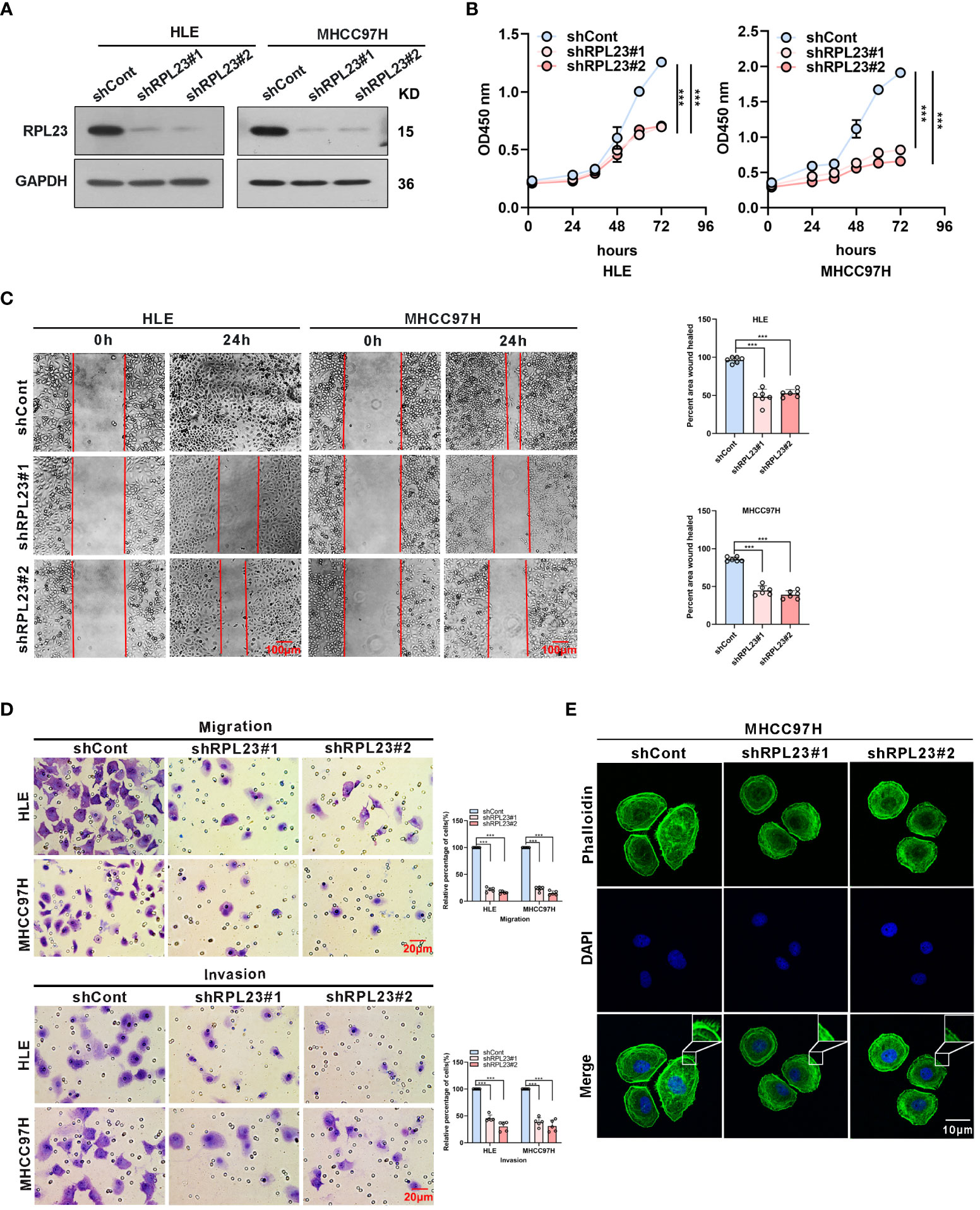
94% of researchers rate our articles as excellent or good
Learn more about the work of our research integrity team to safeguard the quality of each article we publish.
Find out more
CORRECTION article
Front. Oncol. , 08 March 2024
Sec. Molecular and Cellular Oncology
Volume 14 - 2024 | https://doi.org/10.3389/fonc.2024.1373034
This article is a correction to:
Ribosomal Protein L23 Drives the Metastasis of Hepatocellular Carcinoma via Upregulating MMP9
 Minli Yang1†
Minli Yang1† Yujiao Zhou1†
Yujiao Zhou1† Haijun Deng1†
Haijun Deng1† Hongzhong Zhou2
Hongzhong Zhou2 Shengtao Cheng1
Shengtao Cheng1 Dapeng Zhang1
Dapeng Zhang1 Xin He1
Xin He1 Li Mai3
Li Mai3 Yao Chen4
Yao Chen4 Juan Chen1*
Juan Chen1*A Corrigendum on
Ribosomal protein L23 drives the metastasis of hepatocellular carcinoma via upregulating MMP9
By Yang M, Zhou Y, Deng H, Zhou H, Cheng S, Zhang D, He X, Mai L, Chen Y and Chen J (2021) Front. Oncol. 11:779748. doi: 10.3389/fonc.2021.779748
In the published article, there was an error in Figure 3 as published. In Figure 3C, we included the wrong pictures of wounding healing assay of MHCC97H HCC cells in shRPL23#1 at 24h. We made a mistake when we dragged the original figure into the PS software, resulting in a complete repetition of images of shRPL23#1 and shRPL23#2 of MHCC97H at 24h. The representative image of MHCC97H HCC cells in shRPL23#2 at 24h shown in Figure 3C is accurate, and the representative image of MHCC97H HCC cells in shRPL23#1 at 24h shown in Figure 3C is now corrected. We re-examined the original experiment notes and confirmed that this omission did not affect the statistical results and conclusions. The corrected Figure 3 and its caption: “Knockdown of RPL23 significantly suppressed HCC cell proliferation, invasion and migration in vitro” appear below.

Figure 3 Knockdown of RPL23 significantly suppressed HCC cell proliferation, invasion and migration in vitro. (A) Western blot was used to access RPL23 expression after transfected with negative control (shCont) or shRNA (shRPL23#1 and shRPL23#2) in HLE and MHCC97H cells. GAPDH was used as the internal quantitative control. (B) CCK-8 assay showed that RPL23 knockdown suppressed HCC proliferation capacity. (C) Wound-healing assays were performed to determine the migratory abilities of RPL23-knockdown HCC cells in HLE and MHCC97H cells. The cells were counted from 6 images. (D) Cell migration and invasion as measured by transwell assays were inhibited by knockdown RPL23 in HLE and MHCC97H cells. The cells were counted from 5 images. (E) Phalloidin (green color) was applied for cytoskeleton staining, while DAPI (blue color) was used to mark the nuclei in RPL23-depleted MHCC97H cells. Magnification, 630×. Representative data are from at least three independent experiments. Data are shown as mean ± SD. ***P < 0.001.
There was a mistake in Figure 3C, an incorrect image of wounding healing assay of MHCC97H HCC cells in shRPL23#1 at 24h was used. The publisher apologizes for this mistake.
The original version of this article has been updated.
In the published article, there was a mistake in Figure 3C. The image of shRPL23#1 and shRPL23#2 of MHCC97H at 24h displayed were the same. The correct image of shRPL23#1 of MHCC97H at 24h appears below.
The authors apologize for this error and state that this does not change the scientific conclusions of the article in any way. The original article has been updated.
All claims expressed in this article are solely those of the authors and do not necessarily represent those of their affiliated organizations, or those of the publisher, the editors and the reviewers. Any product that may be evaluated in this article, or claim that may be made by its manufacturer, is not guaranteed or endorsed by the publisher.
Keywords: RPL23, HCC, metastasis, RNA stability, MMP9
Citation: Yang M, Zhou Y, Deng H, Zhou H, Cheng S, Zhang D, He X, Mai L, Chen Y and Chen J (2024) Corrigendum: Ribosomal protein L23 drives the metastasis of hepatocellular carcinoma via upregulating MMP9. Front. Oncol. 14:1373034. doi: 10.3389/fonc.2024.1373034
Received: 19 January 2024; Accepted: 19 February 2024;
Published: 08 March 2024.
Edited and Reviewed by:
Jing Zhang, Shanghai Jiao Tong University, ChinaCopyright © 2024 Yang, Zhou, Deng, Zhou, Cheng, Zhang, He, Mai, Chen and Chen. This is an open-access article distributed under the terms of the Creative Commons Attribution License (CC BY). The use, distribution or reproduction in other forums is permitted, provided the original author(s) and the copyright owner(s) are credited and that the original publication in this journal is cited, in accordance with accepted academic practice. No use, distribution or reproduction is permitted which does not comply with these terms.
*Correspondence: Juan Chen, Y2hlbmp1YW4yMDE0QGNxbXUuZWR1LmNu
†These authors have contributed equally to this work
Disclaimer: All claims expressed in this article are solely those of the authors and do not necessarily represent those of their affiliated organizations, or those of the publisher, the editors and the reviewers. Any product that may be evaluated in this article or claim that may be made by its manufacturer is not guaranteed or endorsed by the publisher.
Research integrity at Frontiers

Learn more about the work of our research integrity team to safeguard the quality of each article we publish.